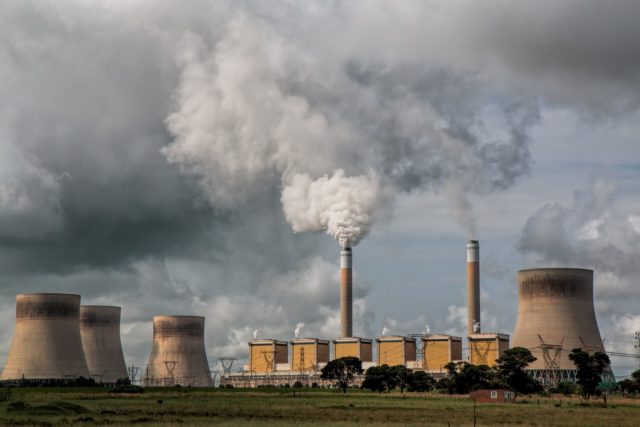Thousands of politicians, bureaucrats and activists joined a few dozen actual scientists in Katowice, Poland for a two-week climate extravaganza the first part of December. On the agenda were, among other topics, “Fashion Industry Charter for Climate Action,” “Gender Day,” “Young and Future Generations Day” and sessions for “review of the work of the improved forum on the impact of the implementation of response measures.”
Meanwhile, news media competed to issue frightening tales of ongoing or imminent climate doom. A U.N. report released ahead of the conference in Poland stated that three years after the Paris agreement on climate change, countries are not doing enough to limit greenhouse gas emissions and slow projected warming of the Earth. A Washington Post headline, for example, read “Study: Climate change increased likelihood of disasters; human-caused warming made at least 15 events more likely in 2017.” But a Wall Street Journal commentary took the opposite tack, questioning the assumptions of those meeting in Poland.
Notwithstanding the Katowice agenda and alarmist news coverage of the U.N.’s annual “emissions gap” report, here are a few facts that will remain inconvenient for participants:
Humans are almost certainly contributing to rising temperatures, climate changes and weather events, at least slightly or locally. But there is no real-world evidence that carbon dioxide (CO2) and other “greenhouse gases” are causing unprecedented regional and global cataclysms.
Those oft-repeated claims are based primarily on computer climate models that begin with the assumption that rising atmospheric CO2 levels are the primary factor in climate change. However, the average prediction by 102 models is now a full degree F above what satellites are actually measuring. Their forecasts for hurricanes, tornadoes, droughts and rising seas are equally inaccurate.
In fact, even as atmospheric carbon dioxide levels climbed to 405 parts per million (0.00405 percent of Earth’s atmosphere), except for short-term temperature spikes during El Niño ocean warming events, there has been virtually no planetary warming since 1998.
The models cannot even recreate past climate and temperature accurately, much less predict the future.
The recent increase in average global temperatures is less than the margin of error in measurement technology and is calculated from 1975, when a decade-long cooling trend had generated a “near unanimous consensus of scientists” that the world was heading into a new Little Ice Age.
Making the “dangerous manmade climate change” assertion even less credible, in recent years a number of climatologists have “adjusted” and “homogenized” temperatures to fit the man-made warming narrative. They lowered older data measurements a degree or so, bumped modern records upward a bit, and based many “hottest year” records on surface measurements contaminated by airport jet engine exhausts, blacktop parking lots, and urban heat from cars, furnaces and air conditioners.
In change, consistency
Tornados are no more frequent or intense than in the 1950s. Droughts differ little from historic trends and cycles, and the Dust Bowl, Anasazi and Mayan droughts were long and destructive. Forest fires are fewer than in the past and primarily due to failure to remove hundreds of millions of dead and diseased trees that, as in California’s recent infernos, provide ready tinder for massive conflagrations.
Harvey was the first major (Category 3-5) hurricane to make U.S. landfall in a record 12 years. The previous record was nine years, set in the 1860s.
Arctic and Antarctic ice are largely within “normal” or “cyclical” levels for the past several centuries—and snow surface temperatures in the East Antarctic Plateau regularly reach -90 °C (-130 F) and lower. Average Antarctic temperatures would have to rise some 20-85 degrees F year-round for all its land ice to melt and cause oceans to rise at faster than their current seven-inches-per-century pace.
Pacific island nations claim they will soon be covered by rising seas—that have risen over 400 feet since the last Pleistocene glaciers melted, without inundating any of them, because corals grow as seas rise.
The Washington Post did report that “the Arctic Ocean is warming up, icebergs are growing scarcer, and in some places the seals are finding the water too hot.” But that was in 1922, and explorers wrote about the occasional absence of Arctic ice long before that.
“We were astonished by the total absence of ice in Barrow Strait,” Francis McClintock, captain of the Fox, wrote in 1860. “I was here at this time in 1854—still frozen up—and doubts were entertained as to the possibility of escape.”
“Snows are less frequent and less deep. … The rivers … scarcely ever [freeze over] now. This change has produced an unfortunate fluctuation between heat and cold in the spring of the year, which is very fatal to fruits.” Sound familiar? Thomas Jefferson wrote that in 1799.
An October 2018 Scripps Institution of Oceanography study asserted that the oceans had absorbed 60 percent more heat than previously thought. It garnered breathless front-page headlines. But within three weeks, its authors withdrew it, admitting they had made major math errors that an independent reviewer had discovered. The reversal received scarcely any news media attention.
Miracle molecule, not pollutant
Far from being a pollutant, carbon dioxide is the miracle molecule without which most life on Earth would cease to exist. The more CO2 in the air, the faster and better crop, forest and grassland plants grow, and the better they can withstand droughts, diseases, and damage from insects and viruses.
The terms “carbon pollution” and “carbon reduction” were devised deliberately to make people think of soot, rather than the gas humans and animals exhale, and plants need to grow.
A slightly warmer planet with more atmospheric CO2 would be tremendously beneficial for plants, wildlife and humanity. A colder planet with less carbon dioxide would greatly reduce arable land extent, growing seasons, wildlife habitats, crop production and our ability to feed humanity.
And that carbon dioxide is increasingly coming from developing countries, which are burning coal, oil and natural gas in rapidly increasing quantities, to fuel economic growth, bring electricity to billions of people who do not yet have it, and lift billions out of poverty.
The reality is that scientists simply do not yet know enough about Earth’s climate or what caused past climate fluctuations to predict future conditions a few years from now, much less a century away. They cannot even separate current human influences from natural influences due to variations in the sun’s energy output, changes in Earth’s elliptical orbit and axis tilt, or the many other powerful, interconnected oceanic and cosmic forces that have caused minor to major climate changes throughout history.
(For an excellent, detailed, enjoyable layman’s guide to nearly every aspect of climate change, few titles can beat Marc Morano’s Politically Incorrect Guide to Climate Change.)
To suggest that anyone can predict future climate and weather conditions is sheer hubris, especially if they focus only or primarily on atmospheric carbon dioxide levels. To insist that any future changes will be dangerous or catastrophic is sheer alarmism.
Paul Driessen is policy advisor for the Committee For A Constructive Tomorrow and author of articles and books on energy, natural resource, climate change, health, environmental and human rights issues.






